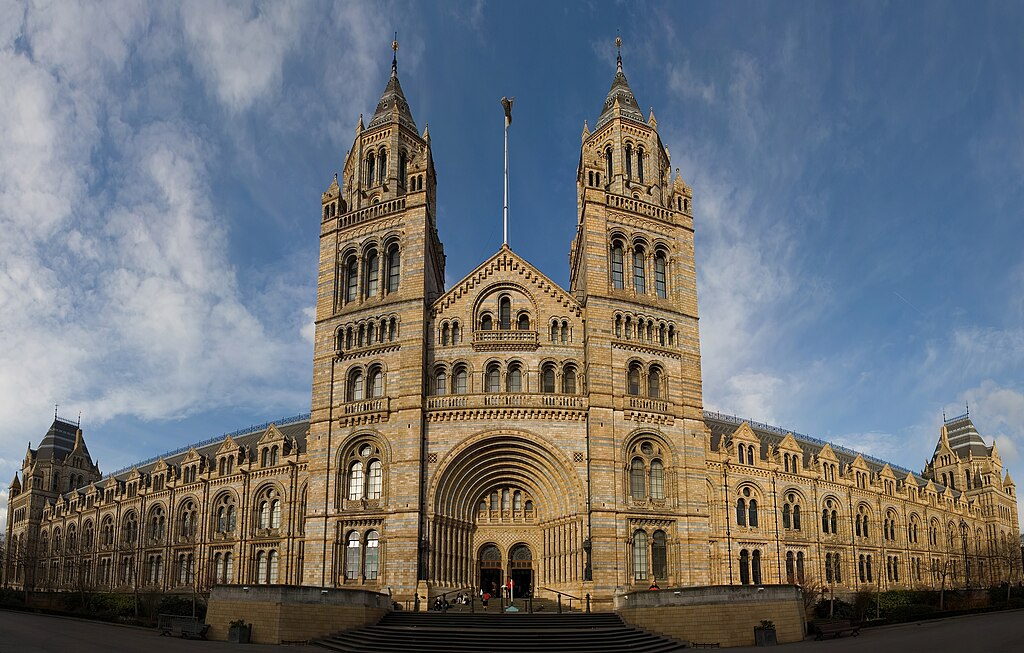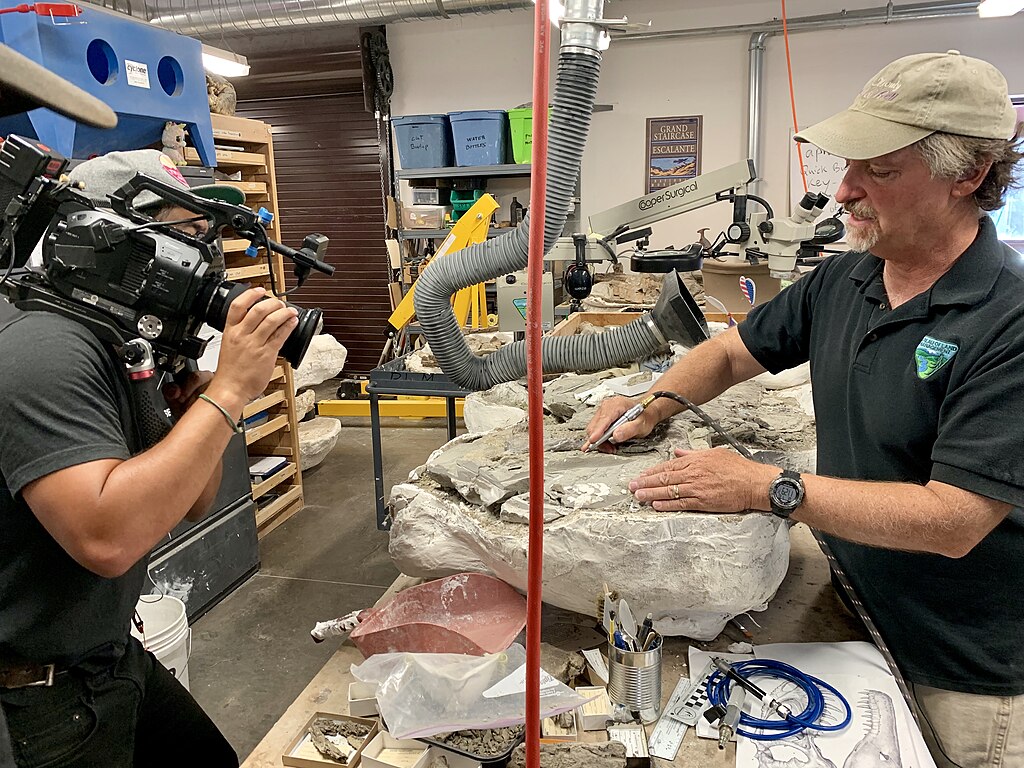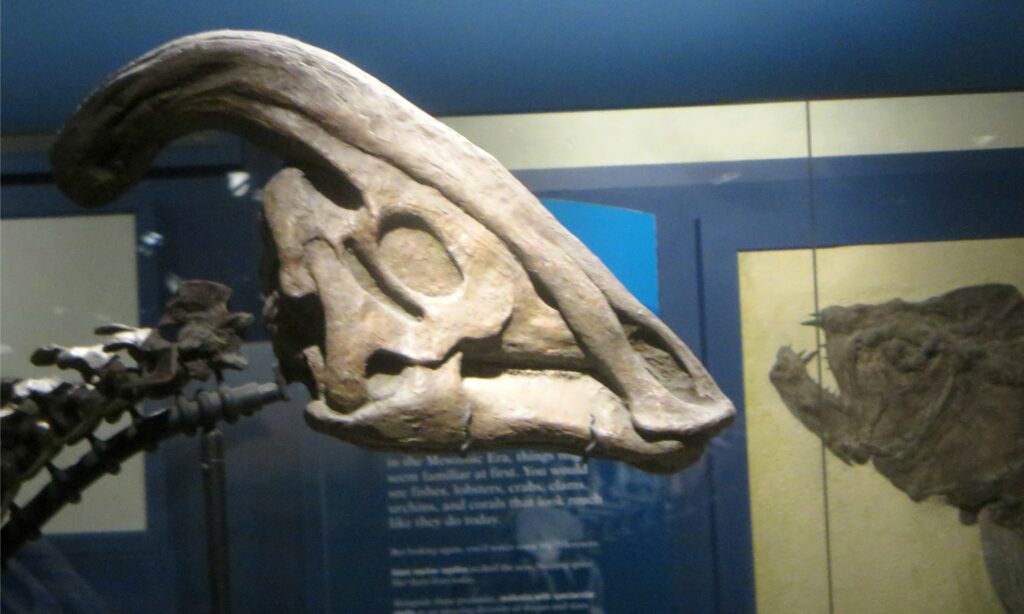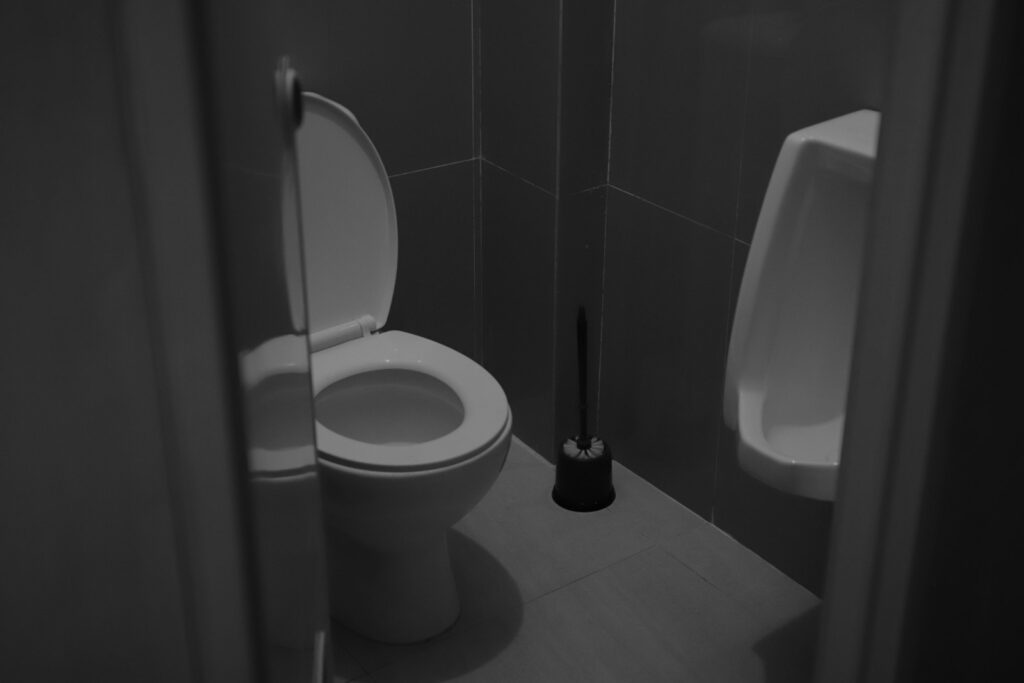London’s Natural History Museum stands as one of the world’s premier scientific institutions, a cathedral of natural wonders where visitors can embark on a journey through Earth’s fascinating history. While the museum houses over 80 million specimens spanning billions of years, it’s perhaps most famous for its spectacular dinosaur collection that captivates visitors of all ages. From the moment you step into the magnificent Hintze Hall and encounter the massive blue whale skeleton suspended from the ceiling, you know you’re in for an extraordinary experience. This Victorian architectural masterpiece doesn’t just display ancient fossils—it tells the compelling story of life’s evolution, scientific discovery, and our ongoing quest to understand the natural world.
A Victorian Palace of Discovery
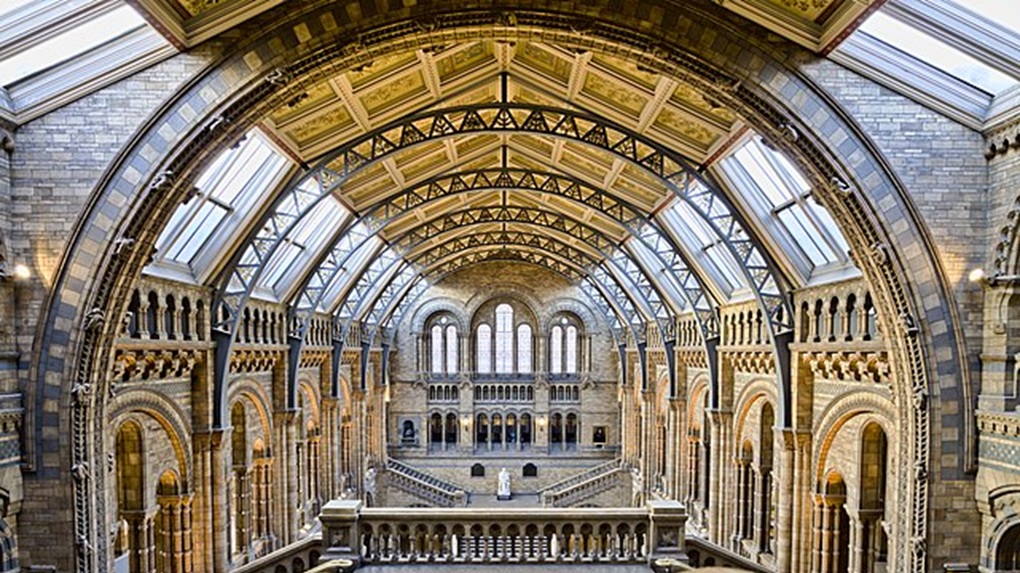
The Natural History Museum’s story begins in 1881 when it separated from the British Museum to become its institution in a purpose-built home in South Kensington. Designed by Alfred Waterhouse, the building itself is a remarkable example of Romanesque architecture, with its terracotta façade adorned with intricate sculptures of plants and animals. The ornate ceiling in the central hall features hand-painted botanical illustrations, reflecting the Victorian era’s fascination with natural history and taxonomy. Waterhouse deliberately created a “cathedral to nature,” with the imposing entrance and grand staircase designed to inspire awe in visitors before they even encountered the collections. Today, this Grade I listed building continues to fulfill its original purpose as both a world-class research facility and a beloved public museum welcoming over five million visitors annually.
Dippy: The Dinosaur That Captured Hearts
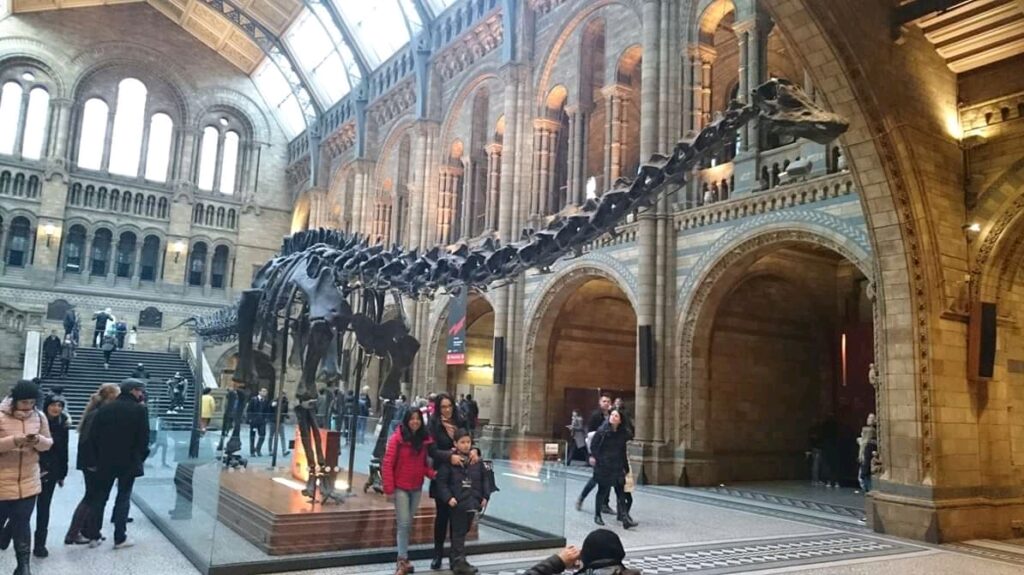
For decades, the museum’s central hall was dominated by the towering presence of “Dippy,” a 105-foot-long Diplodocus cast that became the institution’s unofficial mascot. This plaster replica, created from the original fossil discovered in Wyoming in 1898, was gifted to the museum by American industrialist Andrew Carnegie in 1905 after King Edward VII expressed admiration for the specimen. For generations of visitors, the experience of walking beneath this massive sauropod provided their first awe-inspiring encounter with prehistoric life. Though Dippy was temporarily replaced by the blue whale skeleton “Hope” in 2017, the beloved dinosaur returned to the museum in 2023 after a successful nationwide tour that introduced the iconic specimen to over two million people across the UK. The public’s emotional attachment to Dippy demonstrates how certain museum specimens can transcend their scientific value to become cultural touchstones.
The Dinosaur Gallery: A Journey Through the Mesozoic
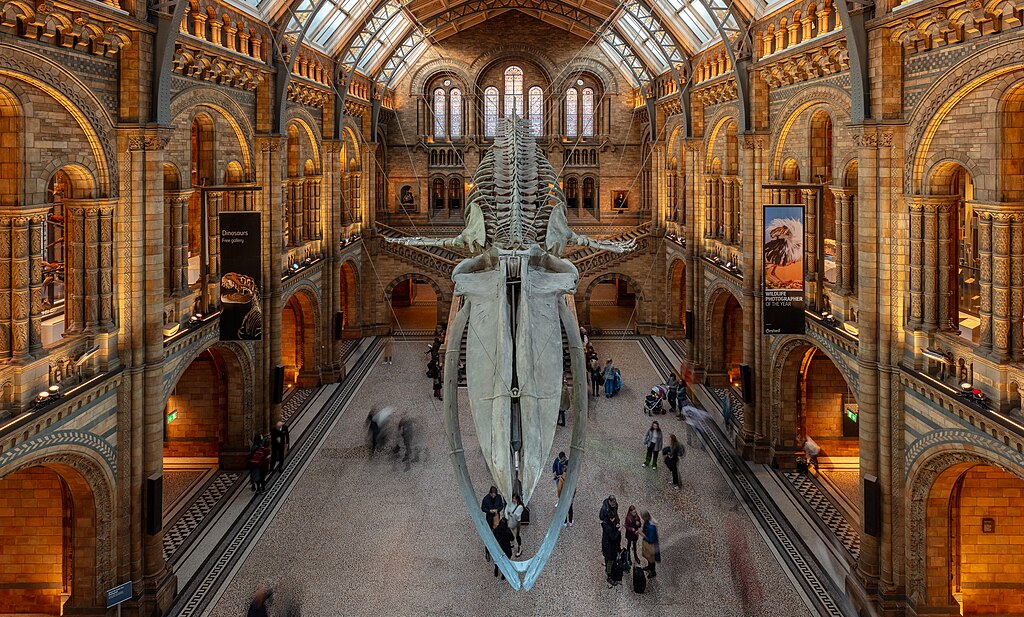
The museum’s dedicated Dinosaur Gallery offers visitors an immersive experience of the Mesozoic Era, when these magnificent creatures dominated Earth’s landscapes. Unlike traditional static displays, this gallery employs innovative storytelling techniques, guiding visitors along an elevated walkway that provides dramatic views of mounted skeletons below. The centerpiece of this experience is the animatronic Tyrannosaurus rex, whose sudden movements and roars have startled generations of children (and more than a few adults). The gallery thoughtfully balances scientific accuracy with visitor engagement, explaining concepts like evolution, adaptation, and extinction through the compelling stories of individual dinosaur species. Interactive elements allow visitors to compare their weight to that of various dinosaurs, examine fossil evidence through digital microscopes, and understand how paleontologists reconstruct ancient ecosystems from fragmentary remains.
Sophie the Stegosaurus: A Remarkable Specimen

Among the museum’s most scientifically valuable dinosaur specimens is “Sophie,” the most complete Stegosaurus skeleton ever discovered. Unearthed in Wyoming in 2003 and acquired by the museum in 2013, this 150-million-year-old fossil includes over 85% of the original skeleton—an extraordinary level of completeness for a dinosaur of this age. Standing at 9.5 feet tall and measuring nearly 18 feet long, Sophie offers researchers unprecedented insights into Stegosaurus anatomy and biology. Advanced scanning techniques have allowed scientists to study Sophie’s brain cavity, suggesting this plant-eater had a brain the size of a dog’s despite its massive body. The distinctive back plates that make Stegosaurus instantly recognizable were likely used for temperature regulation and display rather than defense, as was once thought. Sophie represents not just a spectacular display piece but an active research specimen that continues to yield new scientific understanding.
Behind the Scenes: The Museum’s Scientific Mission
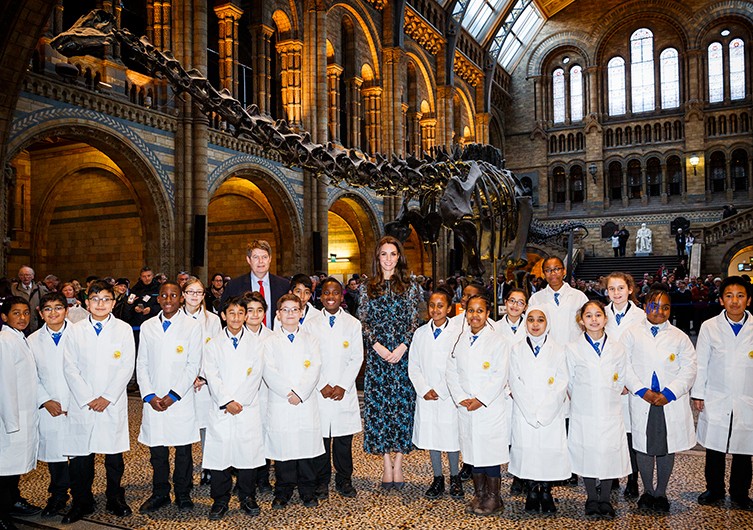
While the public galleries showcase the most visually impressive specimens, much of the museum’s most important work occurs behind the scenes in laboratories and research facilities. The institution employs over 300 scientists who conduct pioneering research across disciplines, including paleontology, entomology, botany, and mineralogy. The museum houses one of the world’s largest natural history collections, with over 80 million specimens available for scientific study. These vast collections serve as a reference library of Earth’s biodiversity, allowing researchers to identify new species, track environmental changes, and understand evolutionary relationships. The paleontology department maintains not only dinosaur fossils but specimens representing the entire span of animal evolution, from primitive Cambrian arthropods to Ice Age mammals. This scientific foundation ensures that the spectacular displays visitors enjoy are based on rigorous research and represent our most current understanding of natural history.
Bringing Dinosaurs to Life: The Art of Paleoreconstruction

Creating the lifelike dinosaur displays that captivate museum visitors requires collaboration between scientists, artists, and technicians in a process known as paleoreconstruction. This begins with careful study of fossil evidence—not just bones but also preserved skin impressions, fossilized nests, trackways, and coprolites (fossilized dung) that provide clues about appearance and behavior. Museum artists then create detailed models based on this evidence, working closely with paleontologists to ensure accuracy while making informed estimates about soft tissues and coloration that rarely fossilize. The museum periodically updates its dinosaur reconstructions to reflect new scientific discoveries, as when evidence from Chinese fossils revealed that many dinosaurs were feathered rather than scaly. Interactive digital displays complement physical specimens, allowing visitors to see animations of how these creatures might have moved and behaved in their ancient environments. These reconstructions represent our best scientific understanding while acknowledging that discoveries continually refine and sometimes revolutionize our image of prehistoric life.
Beyond Dinosaurs: The Museum’s Other Treasures

While dinosaurs may draw the biggest crowds, the Natural History Museum houses countless other specimens of remarkable scientific and historical importance. The Minerals Gallery displays some of Earth’s most spectacular geological formations, including a 4.5-billion-year-old meteorite that predates our planet itself. The mammal hall includes a complete skeleton of the now-extinct Steller’s sea cow, collected during Captain Cook’s voyages in the 1770s, while the marine invertebrates collection preserves specimens gathered by Charles Darwin during his voyage on the HMS Beagle. The Vault showcases some of the world’s most precious gems, including the Aurora Pyramid of Hope—a collection of 296 naturally colored diamonds. The Darwin Centre’s eight-story Cocoon building houses millions of insect and plant specimens in climate-controlled conditions, with viewing windows allowing visitors glimpses of scientists at work. These diverse collections demonstrate the museum’s commitment to documenting and understanding the full spectrum of natural history.
Mary Anning’s Legacy: Pioneering Women in Paleontology
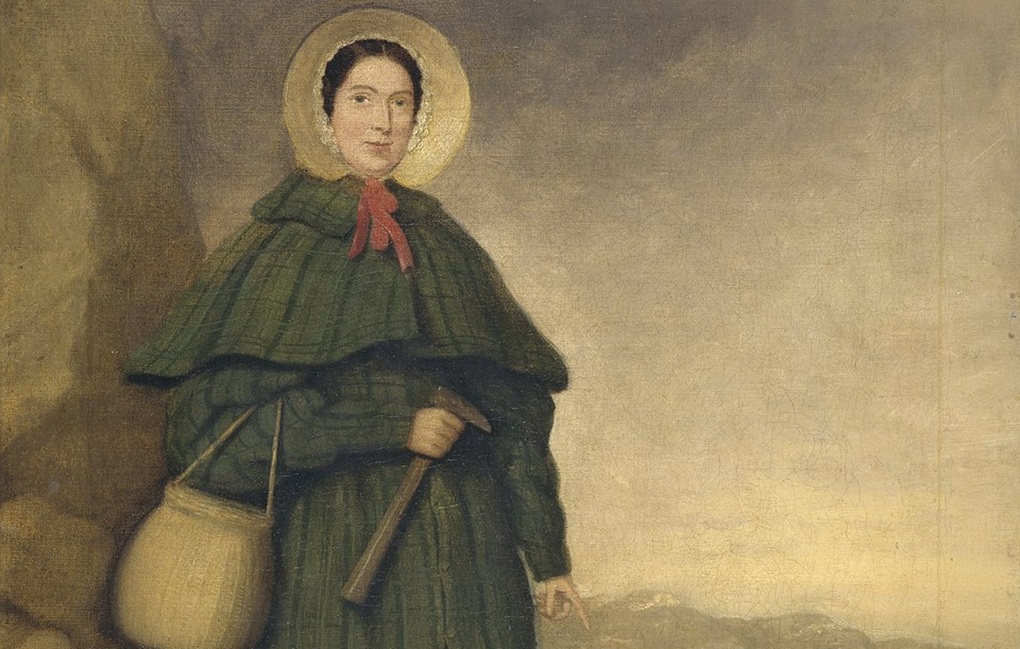
The museum honors the groundbreaking contributions of Mary Anning, a self-taught fossil hunter whose discoveries along England’s Jurassic Coast in the early 19th century revolutionized our understanding of prehistoric life. Despite facing gender and class barriers that prevented her from receiving formal scientific recognition during her lifetime, Anning discovered the first complete Ichthyosaurus skeleton, the first Plesiosaurus, and numerous other important specimens now housed in the museum’s collection. A special display highlights Anning’s remarkable story alongside other pioneering women who shaped natural history despite institutional obstacles. Modern paleontologist Dr. Angela Milner, the museum’s former Head of Fossil Vertebrates, identified and named Baryonyx walkeri in 1986 after its discovery in a Surrey clay pit—one of the most significant dinosaur finds in British history. Through exhibits celebrating these scientists’ achievements, the museum acknowledges both historical contributions and the continuing importance of diversity in scientific research.
The Museum After Dark: Special Experiences
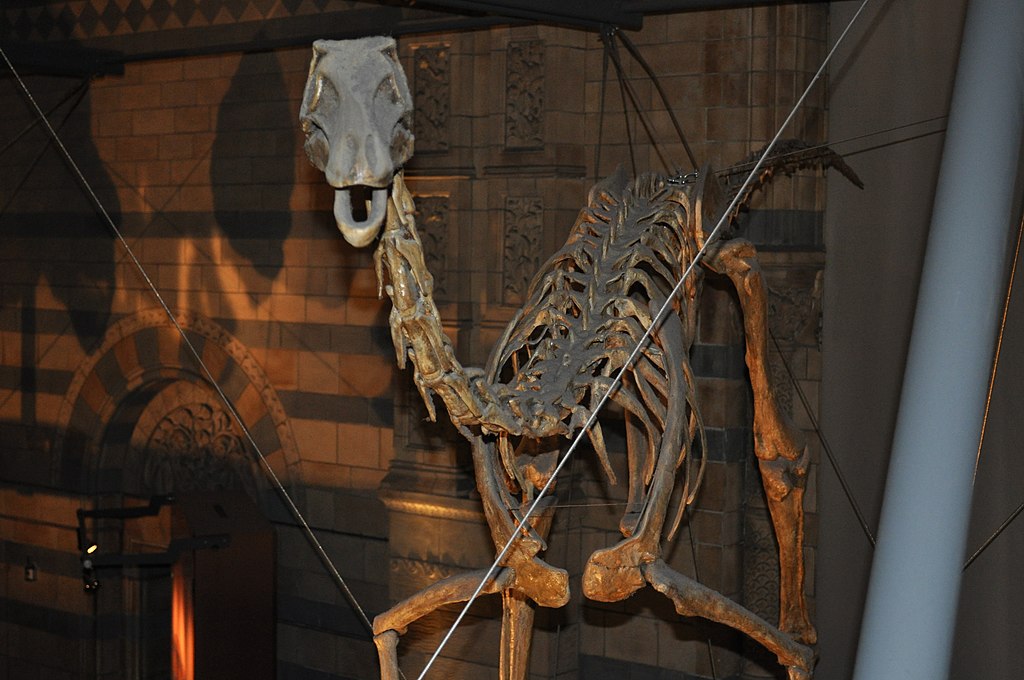
The Natural History Museum transforms after closing hours into a magical space for unique adult-oriented events that offer a different perspective on the collections. The popular “Dino Snores for Grown-ups” overnight events allow visitors to sleep beneath the towering dinosaur skeletons, with activities including behind-the-scenes tours, scientific talks, comedy shows, and wine tastings. Monthly “Lates” events feature themed activities, temporary bars set up throughout the galleries, and the opportunity to explore without the daytime crowds or school groups. These after-hours experiences often highlight areas of scientific research not covered in the permanent galleries, from climate change to biodiversity conservation. Silent discos beneath the blue whale skeleton and flashlight tours of the dimly lit dinosaur gallery create memorable experiences that contrast with the traditional museum visit. These innovative programming approaches help the institution reach new audiences and maintain its relevance as both an educational resource and a cultural destination.
The Museum in Popular Culture

The Natural History Museum’s iconic spaces and specimens have appeared in numerous films, television shows, and literary works, cementing its place in popular culture. The magnificent central hall served as a backdrop for key scenes in “Paddington,” while the Earth Hall’s distinctive escalator through a model of Earth’s core appeared in “Jurassic Park: Fallen Kingdom.” Sir Arthur Conan Doyle’s Professor Challenger, protagonist of “The Lost World,” was inspired by confrontational museum paleontologist William Rutherford. The museum continues to influence fiction through collaborations with authors and filmmakers seeking scientific consultation for accurate portrayals of natural history. Museum scientists worked with the BBC on the groundbreaking documentary series “Walking with Dinosaurs,” ensuring that the computer-generated prehistoric creatures reflected current paleontological understanding. These cultural appearances extend the museum’s educational reach far beyond its physical walls, inspiring curiosity about natural history in audiences worldwide.
Educational Programs and Research Initiatives
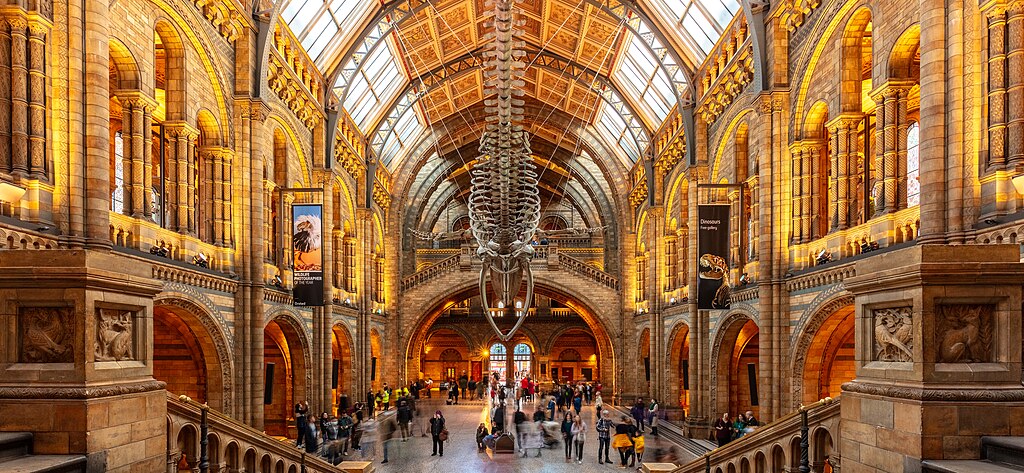
The Natural History Museum serves as a vital educational resource through carefully designed programs that engage learners of all ages. Over 400,000 students visit annually through school programs that align with national curriculum standards while offering hands-on experiences unavailable in classroom settings. The “Investigate Centre” allows children to use scientific tools to examine real specimens, developing observational skills and scientific literacy. For advanced students, the museum offers research placements and mentorship opportunities with working scientists. The institution’s research initiatives extend globally, with field expeditions collecting new specimens and data from environments ranging from tropical rainforests to deep ocean trenches. Museum scientists collaborate with international partners on biodiversity monitoring, establishing baseline data essential for conservation efforts and climate change research. Through digital initiatives including virtual collections and online courses, the museum extends its educational impact to global audiences unable to visit in person.
Planning Your Visit: Practical Information
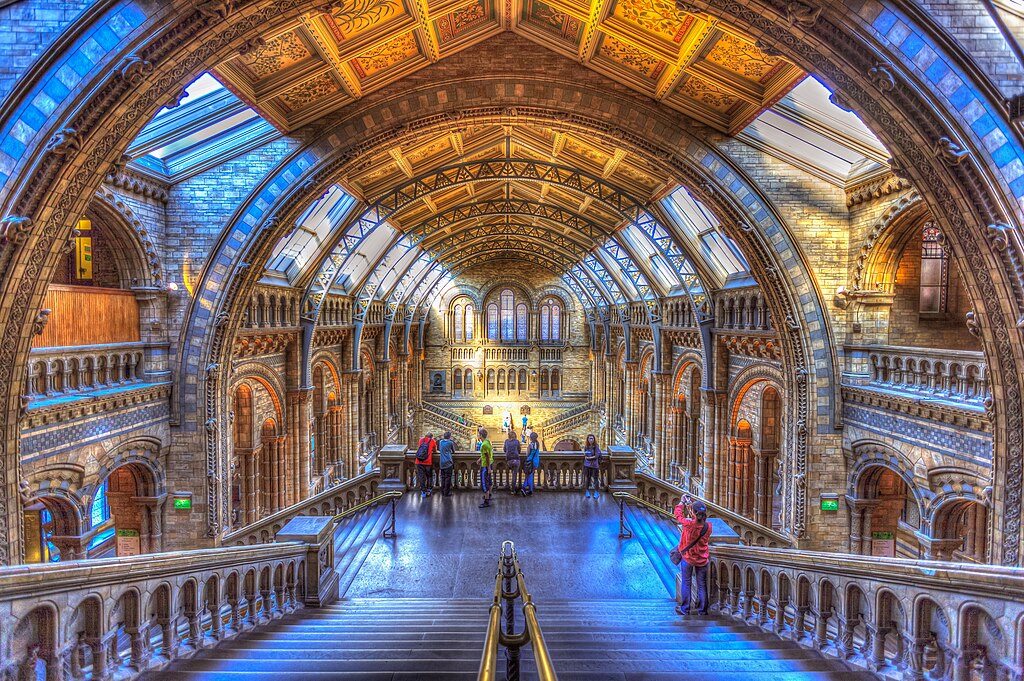
Visiting the Natural History Museum requires some strategic planning to make the most of this vast institution. Located in South Kensington, the museum is easily accessible via the London Underground, with dedicated stations nearby. While general admission remains free (with a suggested donation), special exhibitions typically require paid tickets that should be booked in advance, especially during school holidays when wait times can exceed two hours. The dinosaur gallery consistently draws the largest crowds, making early morning or late afternoon visits advisable for those hoping to avoid the busiest periods. The museum offers excellent accessibility features, including step-free access routes, sensory maps, and quiet rooms for visitors with sensory sensitivities. The on-site restaurant and cafes provide refreshment options, though prices reflect the prime London location. Photography is permitted throughout most galleries for personal use, allowing visitors to capture memories of their encounter with these prehistoric giants.
The Future of Dinosaur Discovery

The Natural History Museum continues to expand our understanding of dinosaurs through ongoing research and new acquisitions. The institution’s scientists actively participate in international dinosaur digs, particularly in areas like the Morrison Formation in the western United States and promising sites across Asia where new species are regularly discovered. Advanced technologies like CT scanning and biomechanical modeling allow researchers to extract new information from existing specimens, revealing details about dinosaur physiology and behavior previously thought unknowable. The museum’s ambitious Digital Collections Programme aims to create high-resolution 3D scans of key specimens, making them accessible to researchers worldwide and enabling studies impossible with fragile physical fossils. Public engagement remains central to the museum’s mission, with plans for expanded interactive exhibits that incorporate augmented reality to bring extinct species to life. As our understanding of dinosaurs continues to evolve, the Natural History Museum remains at the forefront of both scientific discovery and public communication about these fascinating creatures.
Conclusion
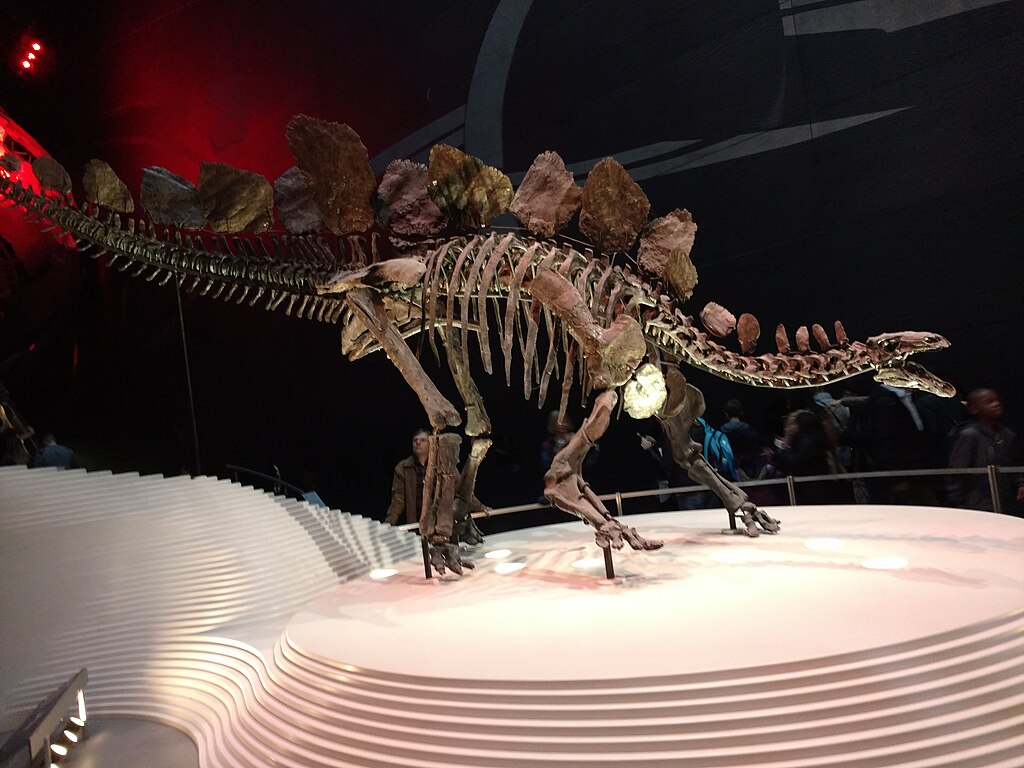
The Natural History Museum stands as both a monument to scientific achievement and a gateway to discovery for new generations. Its dinosaur collection, while spectacular in its own right, represents something greater—our enduring fascination with understanding Earth’s past and our place within the natural world. As scientific techniques advance and new fossils emerge from rocks around the globe, the museum’s galleries and research labs continue to evolve, offering fresh insights into prehistoric life. For visitors walking beneath towering Diplodocus vertebrae or marveling at the fearsome Tyrannosaurus teeth, the experience transcends mere entertainment. It connects us to deep time, inspiring wonder at the extraordinary diversity of life that has inhabited our planet across the ages. In this magnificent Victorian building, science and imagination converge, making the Natural History Museum not just a repository of ancient bones but a living institution where the past informs our future.

